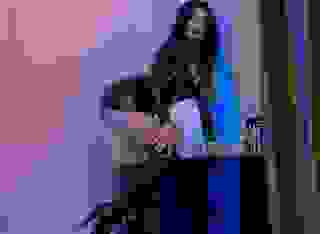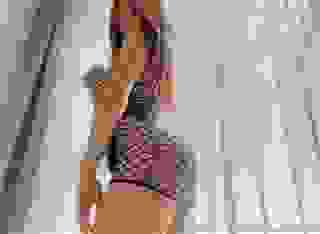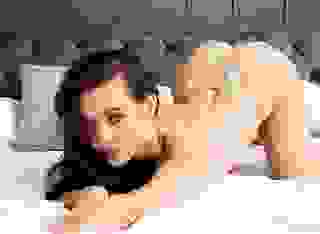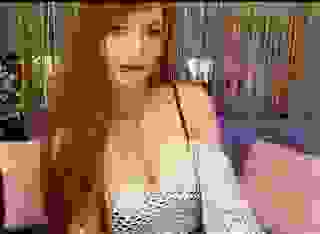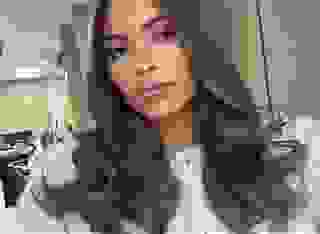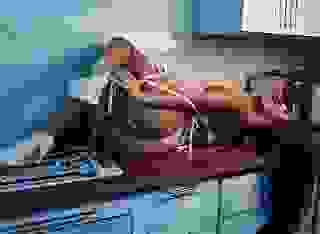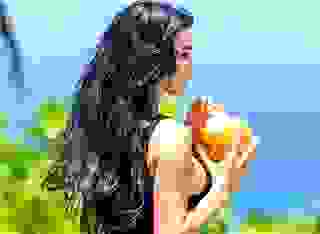Note: You can change font size, font face, and turn on dark mode by clicking the "A" icon tab in the Story Info Box.
You can temporarily switch back to a Classic Literotica® experience during our ongoing public Beta testing. Please consider leaving feedback on issues you experience or suggest improvements.
Click hereThey flew over the houses, offices, schools and parks of a living city that grew out of the mountainside. Hoverbuses negotiated the steep winding streets up to the astroport and a maglev monorail coasted on stilts across the arable terraces between the mountains, heading for its station beside the terminal.
******
They landed safely and disembarked on a warm sunny morning into the glass-covered astroport. About sixty passengers were on the day tour. They were met by guides in red jackets who collected them together into groups of ten or twelve.
The last group to be formed included Hestia, Hana, Grace and Tom. They were delayed because Hestia and Hana, who had been living under artificial light on a space station, stopped to apply lashings of sun-cream before they could be exposed to natural daylight.
The tour-guide was a young Korean woman called Min. She vainly tried to hurry her group along but Hana caused a further delay. She had something else she wanted to do.
Standing on the platform, she took a tennis ball from her backpack and looked up at the ceiling of the astroport to check its height. There were people around her but plenty of room for her task.
Hana threw the ball straight up in the air, watching it climb and fall back toward her outstretched hand. She caught the ball and smiled happily.
"Real gravitation," she said to Hestia with satisfaction. "Make a video of me for Morty please?"
Hestia took Hana's communicator and videoed the girl as she threw the ball in the air again, spinning around to catch it with a great beaming smile, her pony-tail swishing across her face.
"Look, Morty!" she cried to the camera. "It comes down in an exact straight line!"
Hestia filmed the exuberant girl in her innocent fun, laughing as she flung the ball up and caught it again. Best of all, Hestia got a still shot of Hana in mid-air, just as she launched the ball again, kicking her heels up, her knees bent, her back arched, her head thrown back and her arms raised. Her whole frame was an expression of pure joy.
This was when Min came over to hurry the pair along. Down to only eight members, she complained that they would be the last to take a hoverbus from the astroport. Hana sheepishly apologised to them all as she got on the hoverbus, explaining that she promised to send a video to her best-friend back on Capella of her first experience of gravitation.
"Don't you worry, Honey," Grace said on behalf of everyone, whether they agreed or not. "It's important to get your bearings in a new place, especially if you've never been on a planet with real gravity before."
Hana's youthful innocence won over the other members of the group. They got to know each other as the tour began with a hoverbus ride down the mountainside, through the valley between Daughter City and Mother City, crossing a shallow inlet of the ocean when the hoverbus turned amphibious to scoot across the water like a jetboat.
Besides Grace and Tom, whom they knew, and Min the guide, Hestia and Hana introduced themselves to a Chinese couple, Nuo and Chen Yang, who were shopkeepers in their seventies. In the twenty-sixth century, seventy was still middle-aged and the Yangs were a fit and active couple. They were headed to a planet in the Sino-Russian sector and taking excursions at every stop on the way.
The last couple were Rowen and Agatha. Tall blonde women from the Nordic Alliance, they were friends in their thirties on holiday together.
Apart from Min, who immigrated to Eden, they were all tourists from Earth or Capella.
******
The hoverbus took them on an exciting climb on a winding road up sheer cliffs to Mother City. It deposited them at the ground-floor entrance to a large shopping centre in a sheltered canyon between vast skyscrapers.
Mother City was ultra-modern. It was for businessmen, serious shoppers and tourists who liked to party in nightclubs or enjoy the kind of entertainments that need flashing lights and loud noises. It was fun to visit for a while. They had a good breakfast at a food court on the roof of a plastisteel skyscraper among the wispy clouds, with the bustling city far below.
An hour in Mother City was long enough for this particular tour group, who had not come to Eden to go shopping or look at skyscrapers. They took the maglev monorail from the central station, which crossed the wide valleys on plastisteel legs, connecting all three cities. In fifteen minutes, they plunged into the middle of the mountain of Grandmother City. The monorail ascended the seven levels of the city in a spiral inside the mountain, stopping to deposit passengers at underground stations on its way to the peak, sometimes emerging from between the streets, to run on elevated platforms for a quarter-mile or so.
The tour group departed the monorail at level five, three-quarters of the way up the mountain. It was the human heart of Grandmother City: a circle of terraced houses, narrow streets and wide squares with street markets and an artists' quarter.
They emerged into bright sunlight. Min took them on a walking tour through the winding streets. Stone-built houses in long terraces seemed to grow out of the cliffs. Eight stories high, they had wooden shutters, narrow balconies and romantic garrets in which artists traditionally starved or looked for inspiration from cracks in the plaster. Between the streets, there were glimpses of the ocean or heady rooftop views of the lower levels.
The artist colony thrived in these charming back streets, where the best cafes and bars were found.
Crossroads opened out into squares with fountains or shady plane trees. Cafes with tables under blue-and-white parasols spilled out into the wide streets. Market stalls with colourful awnings and noisy vendors sold fruits, vegetables, bread, cheese, cooked meats and artisan wares, blocking the traffic.
Hana was pleased to see the citizens of Grandmother City were keen gardeners. Lush red bougainvillea, lilac and honeysuckle grew on wires across the narrow passageways. Front gardens in the wider roads had orange trees, olives, miniature pines, lollipop-shaped laurels and box hedges. Mock orange and climbing roses in yellow and pink hung over the doorways. Back gardens had American sycamores and tulip trees for shade. There were fig trees for fruit, laburnum for colour and jasmine for perfume.
With stops to browse the street markets, the tour of the artists' quarter finished in the early afternoon. Min told her group:
"Our next stop is a cafe on the main square beside the castle. There's a funicular here to the plaza on level seven, or you can take the stairs. There are 430 steps, so those of us taking the funicular will give the energetic climbers a half-hour head start."
Grace and Tom preferred to be lazy and even the fit Yangs declined the stone steps; but Hana was determined to walk, to feel as much gravity as she could. Hestia also fancied the exercise. Rowen and Agatha came with them, so the four went on foot to the next meeting point at the top of the city.
On the bracing climb, they chatted about home and work. Agatha and Rowen were schoolteachers who left their husbands at home to go travelling for a fortnight during their long summer holiday. They were simple unpretentious folk, friendly but quiet. Their only affectation was to call themselves 'travellers' rather than 'tourists'.
Min was waiting for them at the top of the steps and led them across a wide cobbled square, with the castle on one side and shops, pubs, cafes and hotels in a crescent around the edge. At one end of the crescent was the monorail station.
On the open side of the square between the station and the castle, there was a low wall and a protective barrier to a sheer drop into a chasm that split the top of the mountain, as if a chunk has been sliced from it.
The waterfall from a natural spring in the castle grounds splashed over the edge of the peak and cascaded into the chasm. There was some wind at this height, a mile above the ocean. It drove spray from the falls onto the plaza, making the cobble stones glint and shine.
The back yard of the café opened to a view over the red-tiled roofs and luscious gardens of the city. Hana ran to the parapet to gaze on a vista she had only glimpsed between the houses on the stone staircase.
From the platform built into the cliff, the full beauty of the city opened to her view, one of the most magical sights in Eden Homeworld.
Beyond the roofs was the terraced mountainside, with the shimmering blue sea beyond and other mountains hazy on the horizon. The golden afternoon sun drenched the abundant fields, planted with violet lavender and green spiky wheat. Butterflies fluttered in their manic flight around a buddleia bush. A hundred feet below them, bickering in a fig tree, a flock of parakeets was a colourful nuisance on a hot day.
Perfumed roses climbed the walls of the parapet and infiltrated the wooden balustrade.
"The scents are intoxicating," Hestia said. "It reminds me of a poem I learned at school. Just the line: 'sweet musk-roses and eglantine'. I smell musk roses, but what's eglantine?"
"It's a pink flower, the dog-rose or briar," Hanapedia said. "I can't see any here but we have it in the park on Capella."
After applying more sun-cream, they sat in the garden under a parasol to eat a late lunch while enjoying a cooling breeze and a heart-melting vista.
There were two items left on the tour: buying overpriced kitsch in quaint little shops around the pretty cobbled square, and visiting the castle, which was the town hall, police station, museum and art gallery. There was a special treat in the art gallery of a jewellery exhibition.
Hana was not interested in shopping and she loved a museum. Hestia preferred shops to a museum but they both fancied the art gallery. Rowen and Agatha had the same preference and, as the others had shopped enough in the artists' quarter before taking the funicular, the whole group set off for the fairy-tale castle.
They began with a tour of the town hall, which had a library, a plush great hall lined with portraits and heraldry, half of which served as a council chamber, and a museum that told the history of the colony. Hana took the longest in the museum, learning how the planet was terraformed (it was both hydrolysis and artificial photolysis), so aunt and niece lagged behind the others.
They briefly caught up in the castle grounds, which had planted verges, a small orchard and a rose garden, but they fell behind again when Hana lingered on the glass-floored viewing platform over the waterfall. Hana was thrilled to stand above the waterfall as it dropped over the granite escarpment and disappeared into the mountainside. It reappeared further down the mountain as a stream that splashed through the terraces to the ocean.
She ran to the edge of the platform to look straight down, which frightened Hestia even more than standing on a glass floor above the chasm.
"Don't go so near the edge please, Hana? It gives me the shakes," Hestia said.
"It's all right, Aunt Hestia," Hana assured her, leaning over the barrier. "There's a safety net. It's a shame: it spoils the view."
After the terror of the chasm, they went to find peace in the art gallery.
3 Exhibition
The art gallery was a series of rooms running either side of a long corridor above the great hall.
It featured local artists whose most common subjects (of those paintings that had recognisable subjects) were the people of Grandmother City, living or working in their quaint houses, winding streets, cobbled squares or the fantasy castle. Given the location and the Mediterranean light, views of the sun-blessed terraces and the shimming blue ocean were also popular.
Each room of the gallery was devoted to a school, with paintings in a similar style placed together. Hestia and Hana loved the domestic scenes and the landscapes best. They appreciated the historical and devotional paintings, the portraits, nudes and still lifes, but Hestia was less happy with the last few rooms at the far end of the corridor that led to the special exhibition room.
They were filled with paintings in the modernist style: abstracts, childish still lifes, distorted landscapes and portraits of people with noses and eyes on opposite sides of their faces and horribly contorted bodies.
Hestia had to laugh at some of them.
"You probably understand art better than me," she confessed to Hana, standing before a particularly incomprehensible canvas. "When I was a girl, I liked a painting of a dog or a sunset because I liked dogs and sunsets. Now I can appreciate more subtle things, like showing the brushstrokes or leaving some of the canvas bare. It doesn't have to be a beautiful subject to be a beautiful painting. But this is just ugly.
"It looks like leftovers from dinner. And this one," she pointed to a distorted portrait of a woman: "has got three ears and a belly-button on her chin."
Hana laughed.
"Sometimes the artist is trying to teach us a new way of looking at the world, such as seeing the dimension of time as another spatial dimension."
"Really? This makes sense to you?"
"It does, but that doesn't mean I like it."
"Come on, let's hurry through this wacky stuff and look at the jewellery. It better be good to make up for having to wade through all this. Yuck! There's even more of it in the corridor."
The jewellery exhibition was the current highlight of the gallery. It had its own museum guard. At the moment, it was a tall thin man with dark spiky hair. On display stands were a dozen pieces of desstrolite crystal jewellery. One of the rarest and most expensive minerals in the galaxy, desstrolite had the uncanny property of changing its crystal structure randomly in response to light of different intensities and angles of incidence.
Normally translucent white, the most admired desstrolite crystals had impurities that shone as rich blue veins as the lattice stretched and deformed under the natural variation of light, so that it seemed to viewers like the blue veins were dancing.
Hana said desstrolite had a fractal quality but she did not try to explain to Hestia what fractional dimensions were. It was enough that the crystals scintillated and coruscated with a special kind of beauty.
Cut into regular shapes and polished, the jewels needed to be seen close up for the best effects, so the number of visitors was restricted. Only one tour-group at a time was admitted to the exhibition.
Min's tour group were lucky to have the exhibition to themselves for half-an-hour before the museum closed. It was a treat, because other places they went in Grandmother City were busy enough to make them wait in line. Now they had plenty of time to admire the astonishing jewellery before having to take the monorail to Daughter City astroport and catch the shuttlecraft back to the spaceship.
More than half of the jewels were shaped like teardrops. The largest of these, an inch long, was on loan from a shop on Argus Space Station. It rotated in a glass case under bright lights, making an image of finger-like blue lightning threading through white cotton-wool clouds. The motions were regular enough for the viewer to see patterns but random enough to keep his interest as the image continuously changed.
The masterpiece of the jewellery exhibition was a thin sculpted four-inch-square piece. On a display stand under bright white lights, with no glass protector, it was possible to get up close to the jewel, though discreet signs warned viewers to stay back from the edge of the display stand.
Nuo and Chen were there first, on either side of the jewel. They were mesmerised. Being fair-minded, after five minutes they gave up their places to Rowen and Agatha, who were enraptured as well.
Grace and Tom came next.
"It's fascinating," Grace said. "It looks like a beach with yellow sand and green palm trees, but it's all blue and white. How's it done?"
"I don't know," Tom said. "I guess it's like those diagrams in which a few dots moving in a coordinated way tricks the mind into seeing an entire figure moving. The edges suggest an image and the mind does the rest."
"There's a tree here ..." Grace pointed, moving her hand close to the gem.
An alarm went off and the display stand was bathed in red light. There was a sharp hissing sound and Grace felt her hand pushed away by a firm cushion, as if the air itself became solid.
"Step back, please Ma'am," the spiky-haired guard said.
"Oh, did I do that?" Grace was shocked. "I'm so sorry."
"It's all right, Ma'am. It's happened more times than I've counted. Nothing to worry about. It'll reset in a minute."
The alarm sounded for ten seconds and went off when the attendant called his office to report the false alarm.
Grace was still apologising to the guard while Tom had a close look at the source of microwave compressed air that instantly formed a force-field to protect the jewel.
"It's very sensitive," he said.
"Yes, Sir," the guard agreed. "Too sensitive, if you ask me, but at least we know it works."
The misty air cleared and the red light went off.
"And here's the jewel, safe and sound."
Grace was still embarrassed, so Tom took her away to look at the other exhibits. Hestia and Hana took their places and were soon enthralled as well.
The design was carved just a millimetre into the crystal but it was enough to produce a transcendent effect when the viewers' eyes adjusted. An image popped out of the background. Sculpted from milky white clouds and scintillating blue veins, there was the outline of a desert island, framed by palm trees, with a wide beach and a shimmering ocean.
The palm fronds seemed to bend in the wind, as waves brushed against the sandy beach. By some kind of cognitive trickery, the vivid image seemed to take on the natural colours of the scene, though the jewel was clearly blue and white at the same time. The effect was mesmerising.
Hestia and Hana saw mirror images of the ethereal design. They were so engrossed they did not hear the public announcement that the museum was closing in ten minutes. Nor did they hear the second announcement five minutes later, which prompted the other tour-members to go to join Min. They were so enthralled by the jewel that they remained transfixed even after the final announcement.
The guard stayed patiently near the door during the visit of Min's group, except briefly when Grace set off the alarm, but he paid attention to Hestia. Like a normal red-blooded man, he took many long looks at her and hoped she did not catch him staring.
Now Hestia and Hana were the last visitors in the exhibition. The guard spoke softly, not wanting to break the spell but needing to move them on.
"Excuse me, ladies, but the museum is closing now."
Nodding in obedience, Hestia took one last longing look at the jewel and shut her eyes tightly.
"Guide me out, please," she said to Hana.
"Guide you? Why?"
"I love that jewel so much that I want to keep its image in my mind and not look at those horrible paintings again, so I'm keeping my eyes shut until we get to the stairs. You'll have to guide me."
"You're nuts, Aunt Hestia."
"I know, Dear. Indulge me."
Taking her hand, Hana guided Hestia through the door and along the corridor to the stairs down to the exit, where the tour-group was waiting for the stragglers, as usual. They were at the top of the stairs when an alarm bell went off.
Hestia was forced to open her eyes. A short blonde museum guard came running from the other end of the corridor. She stopped by the entrance to the exhibition room and spoke a few words. Then she continued her run to catch up with Min's group. She looked shocked and worried.
The rest of the tour group were marshalled by another museum guard who ran around the end of the castle to stop them leaving. He led them back up the stairs.
